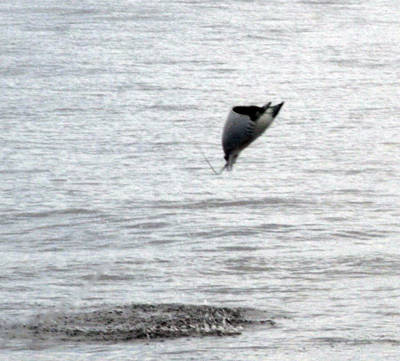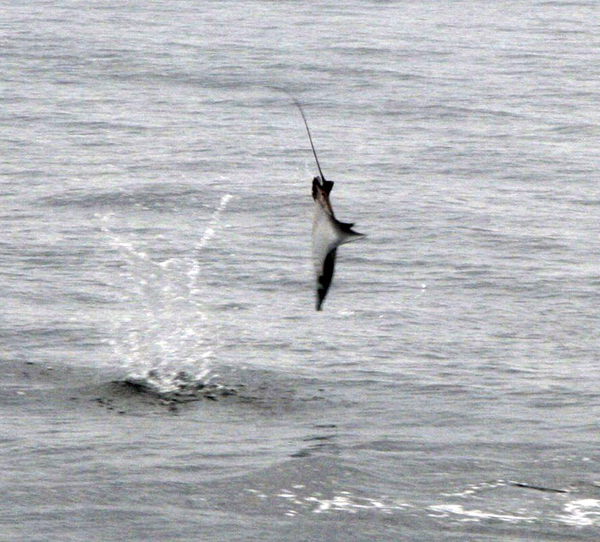Published in the Ocean Watch column, Honolulu Star-Advertiser © Susan Scott
Monday, September 24, 2012

A manta ray leaps in the Sea of Cortez. ©2012 Susan Scott
In my Sept. 10 column, I wrote that rays have been reported giving birth while leaping from the water, but I never knew anyone who saw it. Now I do.
Years ago, reader Ken Goldstein and his wife, Linda, took their granddaughter to the Kaneohe Bay sandbar on weekends in their pontoon boat. Coming home one day, they saw an eagle ray leaping feet from the water near the pontoon’s mooring. Approaching slowly, the family discovered three tiny replicas of the jumping ray.
“The mama ray had no problem with us coming right next to them, and we were even allowed to pet the babies,” Ken emailed. “When we slowly motored off a few hundred feet to moor, they all followed us, and the babies rubbed against our legs in the waist-deep water. Quite a magical encounter.”
Over the next few years in that area, a ray often swam to Ken and rubbed against his legs. When his boat mechanic saw this, he said, “Do you know this ray?”
Ken answered with a happy “Yes!” He believes that since friendly human hands and legs appeared moments after they were born, the little rays deemed people (or at least two white legs in the water) a safe part of their environment.

Ken and Linda befriend other animals, too, providing good homes for tortoises and turtles that need them. They are housing 24 members of several species. For information, email them at rescue@catii.com.
Another reader, Peggy, wrote that an eagle ray forages regularly along the rock wall of Koko Isle in Hawaii Kai. While crossing the bridge over Kalanianiole Highway, Peggy and her husband “saw a giant ray leap straight out of the water on the canal side.” My column made them wonder whether the ray was pregnant.
Since females don’t “show” during their pregnancies, you can’t tell by sight if a ray is expecting. If you get a peek at a ray’s underside, though, you can tell whether it’s male or female.
Male rays (and male sharks) have two tubelike organs, called claspers, on the outside of their pelvic fins. Technically claspers aren’t penises, but they perform the same job of transferring sperm internally to females.
Female rays produce eggs with yolks, but in most eagle ray species, the eggs remain inside the uterus. After the growing embryos use up their egg yolk for nourishment, the mother sustains the babies with fluid secreted from inside her uterine walls. Eagle rays’ pregnancies last for 11 months. Newborns are 6 to 14 inches wide.
Manta rays are another type of ray that leaps from the water, sometimes giving birth to one baby while airborne.
©2012 Susan Scott